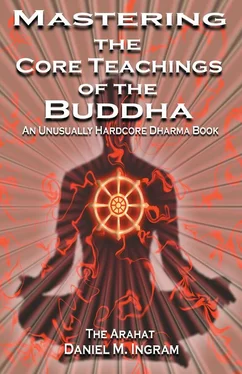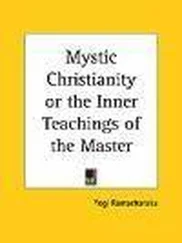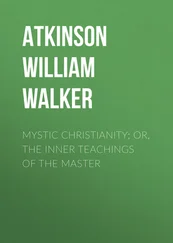Daniel Ingram - Mastering the Core Teachings of Buddha - An Unusually Hardcore Dharma Book
Здесь есть возможность читать онлайн «Daniel Ingram - Mastering the Core Teachings of Buddha - An Unusually Hardcore Dharma Book» весь текст электронной книги совершенно бесплатно (целиком полную версию без сокращений). В некоторых случаях можно слушать аудио, скачать через торрент в формате fb2 и присутствует краткое содержание. Год выпуска: 2009, ISBN: 2009, Издательство: Aeon Books, Жанр: Старинная литература, на русском языке. Описание произведения, (предисловие) а так же отзывы посетителей доступны на портале библиотеки ЛибКат.
- Название:Mastering the Core Teachings of Buddha - An Unusually Hardcore Dharma Book
- Автор:
- Издательство:Aeon Books
- Жанр:
- Год:2009
- ISBN:9781904658405
- Рейтинг книги:5 / 5. Голосов: 1
-
Избранное:Добавить в избранное
- Отзывы:
-
Ваша оценка:
- 100
- 1
- 2
- 3
- 4
- 5
Mastering the Core Teachings of Buddha - An Unusually Hardcore Dharma Book: краткое содержание, описание и аннотация
Предлагаем к чтению аннотацию, описание, краткое содержание или предисловие (зависит от того, что написал сам автор книги «Mastering the Core Teachings of Buddha - An Unusually Hardcore Dharma Book»). Если вы не нашли необходимую информацию о книге — напишите в комментариях, мы постараемся отыскать её.
Mastering the Core Teachings of Buddha - An Unusually Hardcore Dharma Book — читать онлайн бесплатно полную книгу (весь текст) целиком
Ниже представлен текст книги, разбитый по страницам. Система сохранения места последней прочитанной страницы, позволяет с удобством читать онлайн бесплатно книгу «Mastering the Core Teachings of Buddha - An Unusually Hardcore Dharma Book», без необходимости каждый раз заново искать на чём Вы остановились. Поставьте закладку, и сможете в любой момент перейти на страницу, на которой закончили чтение.
Интервал:
Закладка:
For detailed instructions in practices that use an external object, called “kasina” practices, the works listed above, particularly Bhante Gunaratana’s The Path of Serenity and Insight, provide such a good treatment of them that you should simply obtain and read those sources. However, the basic instructions are these: stabilize your concentration on an external object (kasina) until you can see the object with your eyes closed or when you are not looking at the object. Take that vision as the new object and stabilize your attention on it until your concentration is like a rock. From this foundation, you should be able to easily attain any of the states I am about to describe.
The basic pattern one goes through with these states is as follows.
First, one develops enough concentration to attain the jhana. Then the mind sees/feels the jhana, moves towards and into it, with almost all such state shifts occurring between the end of the out breath and the beginning of the new in breath, sometimes accompanied by the eyelids flickering. Then there is the honeymoon period, where the jhana is fresh but unsteady. Then there is the maturation period, when the jhana really comes into its own more solidly and shows its true glory. Then the faults of the jhana tend to become noticeable, as well as the proximity of the state to the state below it and the ease of falling into that lower state.
Next, the concentration deepens, and some sort of equanimity about the good and bad aspects of the jhana sets in. When the concentration grows strong enough and the current jhana is no longer desirable, the mind will naturally shift to the next higher jhana and the cycle goes around again within the limits of the humanly attainable states and your current skill level.
137
Concentration vs. Insight
138
Mastering the Core Teachings of the Buddha
21.THE CONCENTRATION STATES (SAMATHA JHANAS)
THE FIRST JHANA
The first jhana arises after the student has gained the ability to actually steady the mind on some object such as the breath, i.e. after a state called “access concentration,” meaning the level of concentration needed to access the first jhana or insight practice. Notice that if we are spinning lost in thought this is basically impossible. If you wish to attain this, I would try to stay as completely as possible with an object for perhaps 1 minute. When you can do this, try for 10 minutes. When you can do this, try for an hour. For instance, if you were using the breath as an object, try to be aware of every single breath at least in part for a full ten minutes, and then for an hour. This is definitely possible, and a reasonable goal. Try not paying too much attention to the individual sensations themselves, but conceptualize the breath as a coherent and continuous entity, with many different types of sensations all being thought of as being the breath. It is important to know that really getting into a sense of the breath as a continuous entity for 10 seconds will do you more good than being generally with the breath on and off for an hour.
Tune into the illusory smoothness of things by purposefully and calmly working with illusions of solidity or fluidity. There is a certain
“into it” quality which helps, sort of like really getting into a slow groove when playing an instrument, having sex, playing a sport, or just sinking into a well-deserved and warm bubble bath. Being in a silent and safe place is very helpful, as is giving yourself permission to relax, put the cares of the world behind you, and enjoy.
If you are using the breath as an object, you might try purposefully visualizing it as sweet, smooth waves or circles that are peaceful and welcome. Try breathing as if you were in a garden of fragrant roses and you wish to experience the fullness of their fragrance. Perhaps these tips will help illustrate the kind of non-resistant and peaceful presence that can help one attain these states. Tune into sensations in and around the primary object that feel good. Harbor no guilt, anxiety or fear related to the depths of pleasure, ease and well-being. The spiritual life need not
The Concentration States (Samatha Jhanas)
be some sort of relentless, austere grind, particularly when doing concentration practices.
As concentration improves, it is as though the mind “sees” the first jhana and grabs on to it. Having an idea of what you are looking for, i.e.
something enjoyable and steady, can be helpful for this. It has the five primary factors of applied and sustained effort or attention, rapture, happiness and concentration. Thus, it is great fun, feels good, but takes consistent effort to sustain. The attention is focused narrowly, as though one were looking at a small area of this page. This state can be quite a relief from the pain and discomfort of sitting meditation and can temporarily quiet the mind somewhat. As with all the concentration states, it is generally quite easy to concentrate on something that is very enjoyable. Thus, one’s concentration skills may improve rapidly and easily after attaining the first jhana and tend to basically flounder until one has attained the first jhana. Thus, attaining the first jhana is really, really important.
People tend to really like this state, and may cling to it for the rest of the retreat if on retreat, or cultivate it again and again in their sitting practice at home. It is a valuable attainment, as it serves as the minimum foundation for both insight and concentration practices. From the first jhana there are basically three things a meditator can do. They can either get stuck there (I know someone who spent some twenty years cultivating the first jhana in their daily practice and thinking this was insight practice), they can progress to the second jhana, or they can
investigate the first jhana and thus begin the progress of insight.
By “investigate” the state, I mean that they can direct their attention to breaking the illusion of the solidity of that state into its component individual sensations so that one can understand their true nature, i.e.
the Three Characteristics, as is done in insight practice with all objects.
Special attention must be paid to trying to experience the precise arising and passing of every individual sensation that makes up the state, particularly the primary beneficial factors of the state listed above.
While it is not actually possible to perceive the arising and passing of every single sensation or to even be mindful of every sensation, it is definitely possible to be clear about enough of them to get enlightened, and that is what matters. It is somewhat common for people to do this 140
The Concentration States (Samatha Jhanas)
half-heartedly and not pay particular attention to the myriad sensations that make up rapture and happiness, as they secretly wish them to be permanent, satisfy and be self or the property of self. Stagnation is basically guaranteed in insight practice if you cling to pleasant sensations in this way, or anything else for that matter. Put another way, if you fail to see the impermanence of objects, you will have artificially solidified them (“clung to” them) and will not gain insight from them.
The near enemy of the first samatha jhana is access concentration, and when the applied and sustained effort or attention flag somewhat, access concentration sets in. As the texts rightly say, the applied and sustained effort, i.e. the fact that you have to make effort to get into and stay in this state, are also somewhat annoying. This becomes more and more apparent, and clear awareness of just this simple fact while staying in the jhana causes the mind to eventually bail out of the first jhana and into the second jhana.
THE SECOND JHANA
The second jhana is like the first, i.e. a seemingly solidified mind state. With the dropping of almost all of applied and sustained effort the rapture and happiness factors created by concentration can really predominate. Thus, whereas the first jhana feels like something you need to pay attention to, the second jhana has the quality of showing itself to you. The focus of attention widens out somewhat, sort of like looking straight ahead without focusing the eyes on anything specific.
Читать дальшеИнтервал:
Закладка:
Похожие книги на «Mastering the Core Teachings of Buddha - An Unusually Hardcore Dharma Book»
Представляем Вашему вниманию похожие книги на «Mastering the Core Teachings of Buddha - An Unusually Hardcore Dharma Book» списком для выбора. Мы отобрали схожую по названию и смыслу литературу в надежде предоставить читателям больше вариантов отыскать новые, интересные, ещё непрочитанные произведения.
Обсуждение, отзывы о книге «Mastering the Core Teachings of Buddha - An Unusually Hardcore Dharma Book» и просто собственные мнения читателей. Оставьте ваши комментарии, напишите, что Вы думаете о произведении, его смысле или главных героях. Укажите что конкретно понравилось, а что нет, и почему Вы так считаете.












